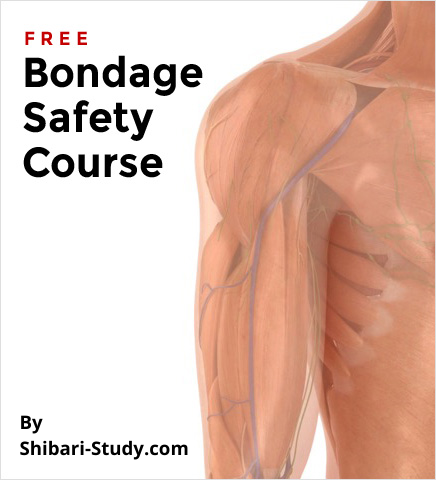Due to stereotypes from popular culture, most people assume that bondage is inherently undesirable—but the majority of their arguments for why that is tends to be either grossly misinformed or easily adjusted to suit their personal preferences.
Comb through these links below to see which other popular stereotypes, myths, and assumptions need squashing!
Some of the most common questions include:
Only if all participants enthusiastically want it to be. Hard stop.
Only if you want to.
Most of the valid issues with clothes (i.e. additional compression and pinching from tying over folds on baggy clothes, etc.) can be solved by wearing tighter-fitting clothes like sports bras, cycling shorts, or leggings.
Being able to spot discoloration from circulation loss and feel the temperature changes are nice reasons for having direct visual access to bare skin but these can also be done when the model is clothed. These checks for circulation issues will tend to manifest on the extremities which, assuming you don’t plan on wearing gloves, will be easily within view and reach.
Riggers, on the other hand, absolutely /have/ to be naked. It’s simply tradition.
Short answer: If both of you don’t have enough training, there’s a good chance it will be painful. With enough skill however, you can both choose what kind and how much pain you want to be involved.
—
Long answer: We need to recognize that there’s good pain and bad pain.
Good pain is intentionally caused, their intensity is under control, and their risks have been researched plus mitigated. This is something we consent to (i.e. spanking, candle wax play, rope burn, rough handling, etc.).
The goal is to deliver a sensation because we like it (i.e. stinging, thudding, etc.).
Bad pain on the other hand is unplanned, uncontrolled, potentially lethal/permanent, and definitely unwanted. These include injuries (i.e. dislocations, nerve damage, and fall injuries, etc.) with consequences that bleed into our normal lives. We actively try to prevent these.
With enough training, a rope top would know how to apply the rope in a way that doesn’t need to be excessively tight, doesn’t damage the body, and avoids bad pain.
With enough training, a rope bottom would know how to distinguish their body’s signals, speak up when necessary, and choose which actions (i.e. positions, adjustments, resistance) they can do that won’t put them in jeopardy.
With those baselines set, you’re both free to incorporate good pain into your bondage sessions if you want to. If you don’t want to, then feel free to completely avoid incorporating any pain at all. 🙂
References & Recommendations
- Free
- Article
Buzzfeed’s Casey Gueren shares a pretty solid primer on getting started with kink/BDSM.
- Free
- Article
TheBlackPomegranate.com: “Rigger” is one of the names assigned to bondage practitioners who do the tying. Click this link for to find out what most people get wrong!
- Free
- Article
This article charts the history of the fight that got kink de-classified as mental illness.
- Free
- Article
“So what does it mean to be kind with our rope?”
- Free
- Article
Cosmopolitan.co.za: Fetish photographer and Shibari rigger Jesse Flanagan goes over some definitions and misconceptions about Shibari.









